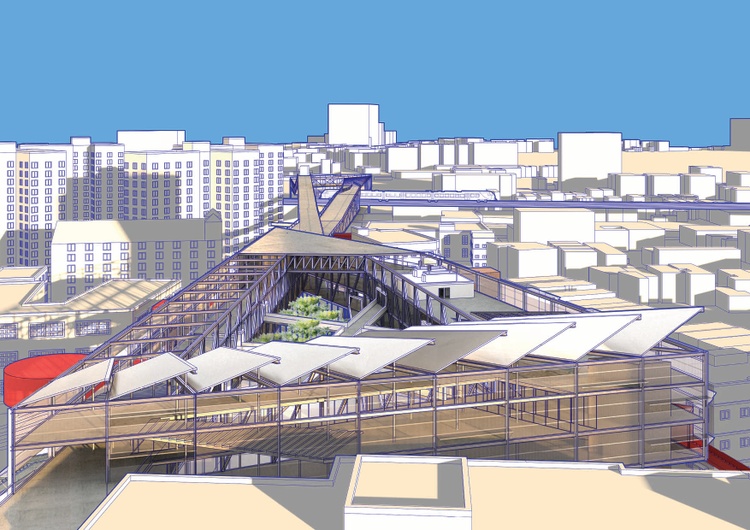Recognizing the Collaborative Refine Between Engineers and Engineers in Modern Construction Projects
The collaborative process between engineers and designers is necessary in modern-day construction jobs, as it integrates layout intent with design feasibility. This partnership not only influences the aesthetic and practical aspects of a job however additionally plays a critical duty in dealing with sustainability challenges. By using efficient communication approaches and leveraging sophisticated modern technologies, such as Building Information Modeling (BIM), teams can function more cohesively. The details of this collaboration commonly present one-of-a-kind difficulties that can hinder development. Discovering these dynamics reveals insights that could significantly affect job end results and overall market standards.
The Value of Partnership
The collaborative synergy in between architects and designers is essential for the effective awareness of any building job. This collaboration brings with each other distinctive competence and point of views, making it possible for the assimilation of cutting-edge style with useful engineering services. By working together, engineers and designers can make sure that a task not just fulfills visual and functional requirements however also sticks to security, sustainability, and budgetary restraints.
Collaboration fosters a common vision, facilitating the alignment of objectives and expectations from the start. This alignment is essential in addressing potential difficulties and mitigating dangers that could develop during the project lifecycle. Additionally, a collective approach permits the efficient appropriation of sources, maximizing both time and price.
The value of collaboration extends to the iterative procedure of style and building, where comments from engineers can notify building decisions, resulting in even more viable and sustainable layouts. On the other hand, designers can motivate engineers to assume creatively about how to accomplish structural stability without endangering artistic intent. Inevitably, the collective connection in between architects and designers is not just helpful; it is fundamental to the creation of premium, practical, and innovative developed environments that fulfill the needs of society.
Communication Methods and Devices
Efficient interaction strategies and tools are crucial for promoting partnership between designers and designers throughout the job lifecycle. Developing clear networks of interaction is necessary to make certain that all staff member are lined up with task objectives, timelines, and duties. Regular conferences, both in-person and online, offer possibilities for stakeholders to discuss progress, address concerns, and make notified choices.
Utilizing job management software, such as BIM (Building Details Modeling) platforms, improves collaboration by enabling real-time sharing of style adjustments and technological specifications. These tools assist in openness, permitting designers and designers to envision changes and assess their effect on the general job.

Shared Goals and Task Vision

Developing shared objectives involves open discussion and a comprehensive understanding of each technique's contributions. Designers generally concentrate on design intent, spatial partnerships, and individual experience, have a peek here while engineers emphasize architectural stability, systems performance, and compliance with policies (cda architects). When these perspectives are straightened, the outcome is a natural job that follows both imaginative desires and technological usefulness
Furthermore, a distinct task vision fosters liability amongst employee, encouraging each participant to take possession of their duty in attaining the desired result. Routine check-ins and collective workshops can even more reinforce this dedication, permitting modifications to be made as the project evolves. Inevitably, a shared vision not her response just improves synergy however also boosts the top quality of the final deliverable, resulting in effective project conclusion.
The Role of Modern Technology
Leveraging modern technology has ended up being necessary in boosting collaboration between architects and engineers. Building Details Modeling (BIM) stands out as a pivotal modern technology, enabling both engineers and designers to develop thorough 3D versions that encapsulate layout intent and structural stability.
Furthermore, cloud-based systems allow seamless partnership, allowing project stakeholders to access and update project data from anywhere. This cultivates a culture of openness and liability, as modifications can be tracked and reviewed in real-time. Additionally, mobile applications more improve interaction, providing on-site teams with prompt access to job specifications and updates.
Arising modern technologies such as expert system and device knowing are likewise starting to contribute in predictive evaluation, helping groups identify possible concerns prior to they develop. Ultimately, the duty of technology in architecture-engineering collaboration not only enhances process performances but additionally enhances innovation, causing even more effective task end results. By welcoming these technological advancements, architects and engineers can make certain a much more natural and effective joint procedure throughout the building and construction lifecycle.
Study in Effective Collaborations
Numerous study illustrate the extensive influence of reliable partnerships between architects and engineers on job outcomes. One noteworthy instance is the partnership on the High Line in New York City City, where landscape architects, designers, and city planners collaborated to transform a deserted railway right into a vibrant Recommended Site public park. This multidisciplinary technique not only boosted the visual top quality however also made sure structural security and environmental sustainability.
An additional exemplary situation is the design and building of the Sydney Music Hall. The collaboration between designer JÃ ¸ rn Utzon and structural engineer Ove Arup exhibited ingenious analytical. Their collaboration allowed for the renowned shell-like layout while resolving intricate engineering obstacles, ultimately bring about an ageless building masterpiece.
The Burj Khalifa in Dubai better shows the value of joint efforts. cda architects. The combination of style and engineering knowledge made it possible for the project group to attain extraordinary elevations while sticking to safety and security laws and visual vision
These examples highlight the relevance of communication, count on, and shared objectives. In today's complex building setting, such partnerships are important to browsing challenges and providing projects that satisfy both practical and visionary goals.
Verdict
In verdict, the partnership between engineers and designers is crucial for the success of modern building and construction tasks. Effective communication strategies, a common job vision, and the assimilation of sophisticated modern technologies are crucial components that facilitate this collaboration.